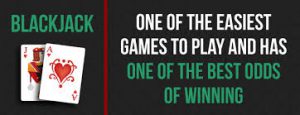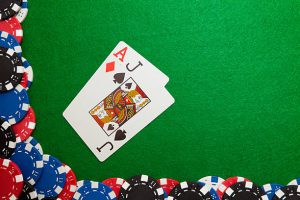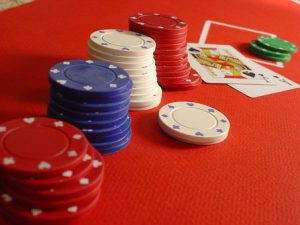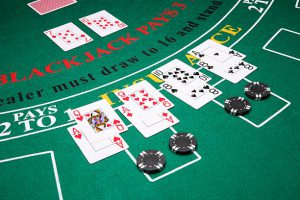What’s the Difference
In this version, both of the dealer’s cards are exposed. To compensate for this, there are rule changes that will favor the dealer. You can assume that the house edge is better than in traditional blackjack, but it still is a top favorite variation for seasoned blackjack players.
Rules (Usual)
- Both dealer cards are exposed
- Dealer wins all ties, except on a natural blackjack
- Player blackjack pays 1:1 (even money)
- Player may split only once
- No Insurance or surrender allowed
Additional rules that CAN vary:
- Dealer hits or stands on soft 17
- Tied blackjack either pushes or goes to the player
- Player may or may not double after a split
- Player may double on any first two cards or not
- Player may split more than once
- Player may or may not split different 10-value cards (10, J, Q, K)
Strategy
The strategy for this is absolutely different than that of traditional blackjack. For instance, with double exposure blackjack, you would split two ten value cards whenever the dealer shows 13-16 and of course a hard 19 must be hit if the dealer has a 20. This would not be typical strategy in traditional blackjack.
The fact that the dealer wins all ties (except blackjack) is what affects a player’s return the most. It has been figured that the rule changes affect the player’s return as follows:
-
- If the dealer stands on a soft 17, player’s edge is increased +.39%
- If a double after a split is allowed, player’s edge is increased +.32%
- If a tied blackjack is a win, player’s edge is increased +.22%
- If a player can split only once, player’s edge is decreased -.71%
- If a player can double on 9-11 only, player’s edge is decreased -1.04%
- If a player can double on 10-11 only, player’s edge is decreased -1.44%
Perhaps the wide variance in edge advantage, is what entices the seasoned blackjack players to take a chance with this version. It can be exciting to know that you have a better than normal chance of winning in certain situations.
As long as you have the basic knowledge of traditional blackjack, you can use the additional knowledge gained from seeing the dealer’s cards and work it to your advantage. It will cut down the errors made when guessing and although some rules work against the player, a good blackjack player will be able to turn things around for themselves
For example, when you can see that your hand is lower than the dealer’s hand, you know that the only choice you have would be to hit. As alluded to earlier, If both yours and the dealer’s hands are high, say 19 vs. 20, you need to hit. You will still lose if you are dealt a higher card, but at least you won’t have to guess whether to hit or stand. With games like this, who knows, you might still win it. It may be tough to hit an 18 or 19, but if you know (can see) that the dealer has 20, it’s better to hit and try for the small card, than accept immediate defeat!
My Two Cents
This is another version of blackjack that is more popular online, than offline, but a player’s favorite. Of course it’s easier for the player to make decisions in this because you see the dealer’s hand. However, the rule changes actually give a bigger edge to the dealer, so your strategy must be on point.
While the double exposure blackjack odds may not be as good, the game is quite exciting and competitive for many players enjoyment. Played with the correct strategy and skills, a profit can still be made. Good Luck!



